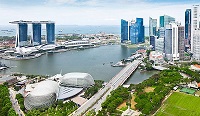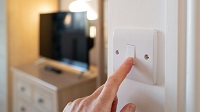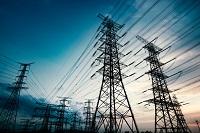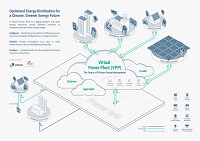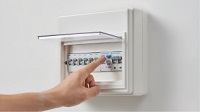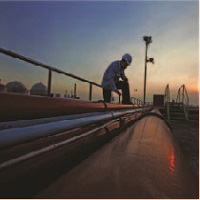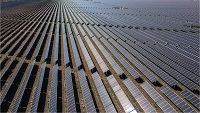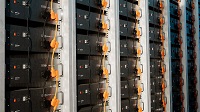Mr Teo Nam Kuan, Group Director of SPRING Singapore,
Distinguished Guests,
Ladies and Gentlemen,
I am honoured to be invited to speak to you at the launch of the amendment to Singapore Standard CP 5 1998 - Code of Practice for Electrical Installations.
The Electrical Installations Regulations require all electrical installations to comply with Singapore Standard CP 5 - Code of Practice for Electrical Installations. The current edition of CP 5 is aligned with the requirements of the IEE Wiring Regulations 16th Edition, which is now known as BS 7671.
The Amendment to SS CP 5 was prepared by the Technical Committee appointed by the Electrical & Electronics Standards Committee of SPRING. The amendment addresses two issues: changes in the cable colour code for fixed electrical installations and technical guidelines for solar photovoltaic power supply system. Let me elaborate on them. The new cable colour code was first adopted by the European Committee for Electrotechnical Standardization (CENELEC) for electrical installations of its member countries. United Kingdom, one of the members of CENELEC, had subsequently revised the IEE Wiring Regulations and adopted the harmonized cable colour code in 2004 to align with the European practices. Hong Kong has also recently aligned their cable colour code with the UK practices.
As more and more countries adopt the new cable colour code, there is no advantage for a small country like Singapore with much lower demand of electrical cables than many other countries to keep our existing cable colour code which is different from that of the international community.
Furthermore, with the decreasing demand in electrical cables under the existing colour code around the world, the cost of electrical cables under the existing colour code may become less competitive and the delivery may become more unreliable in the future. As such, it would make economic sense for Singapore to adopt the new cable colour code.
As you are probably aware, the Technical Committee of CP 5 comprises representatives from the electrical trades and industries, businesses, training institutions and government agencies. The amendment to the cable colour code put up by the Technical Committee and the supplementary guide initiated by EMA are now incorporated into CP 5 as a pictorial guide. The amendment will align our local cable colour code with international standards and at the same time, address our local needs and practices so that the standard of electrical safety will not be compromised with this change.
During the last few months, SPRING Singapore had organised an industry consultation session to seek comments on the draft amendment. EMA had also conducted several consultation sessions with IES, ACES, Singapore Manufacturers’ Federation, Singapore Electrical Contractors and Licensed Electrical Workers Association, Singapore Electrical Trade Association, licensed electrical workers and government agencies such as HDB, JTC, LTA to gather their feedback on the likely impact and issues arising from the change in the colour code for electrical cables used in electrical installations. We are pleased to note that the feedback we received were positive. The industries, businesses and training institutions were supportive of the change in the cable colour code, and had indicated a preferred lead-time of between 12 months to 24 months to enable them to adapt to the new requirements.
I am pleased to announce that the industry may start using the new cable colour code from 1 March 2009. To minimise disruption to existing projects and for the industry to adapt to the change in cable colour code, there will be a transition period of 24 months before the new cable colour code is made mandatory.
During the transition period from 1 Mar 2009 up to 28 February 2011, you may use either the existing cable colour code or the new cable colour code but not both for each of your projects. After the transition period, that is, from 1 March 2011 onwards, all new installations, replacements or extensions will have to comply with the new cable colour code. To ensure that all licensed electrical workers are well versed with the new colour code, EMA will be co-organising briefing sessions with SPRING Singapore for all licensed electrical workers in the next few months. ITE and BCA Academy will also be conducting training courses to help electrical contractors and installers to cope with the change.
The supplementary guide, which provides pictorial illustrations on how to apply the requirements of new cable colour code under various scenarios, is designed to be user-friendly for industry professionals and competent persons. This will help them to better understand the new colour code as well as the requirements on the marking of cables under the two different sets of colour code, viz. the existing and new cable colour code.
The other section of the Amendment to SS CP 5 provides technical guidelines for solar photovoltaic installation.
With the increasing demand for solar photovoltaic systems, it is necessary to have standardised requirements for photovoltaic systems and their integration with electrical installations to ensure the safe use of such systems in electrical installations. This new section on photovoltaic systems is therefore a timely addition to the code of practice. All stakeholders involved shall comply with the technical requirements with immediate effect if a photovoltaic system is to be used as part of an electrical installation.
In conclusion, this Amendment to SS CP 5 is necessary to keep our local industry in pace with new changes in technology and to align with international standards and practices to ensure the safe use of electricity. I seek your continual support to uphold the high standard in this industry.
Thank you.
To view this Report in PDF format, please click on the link below
